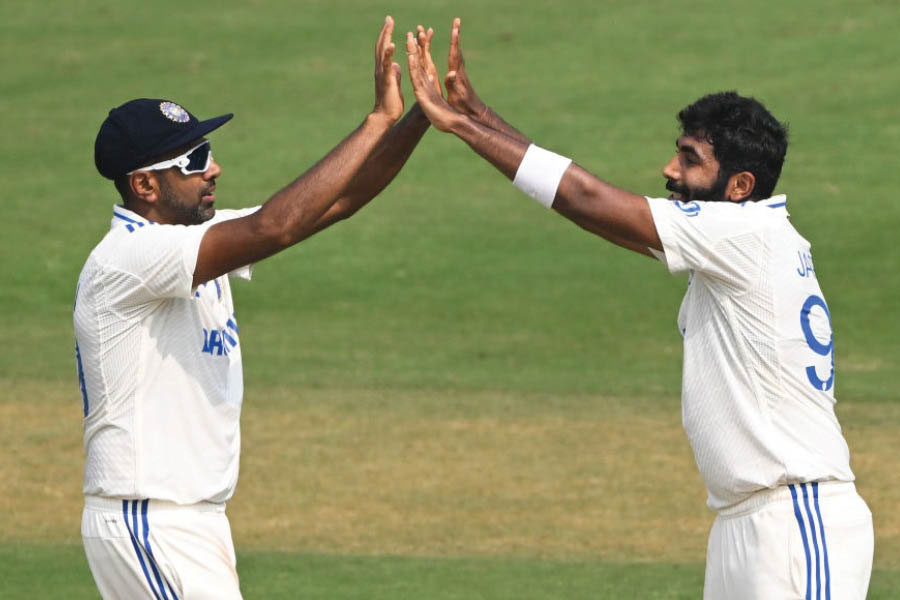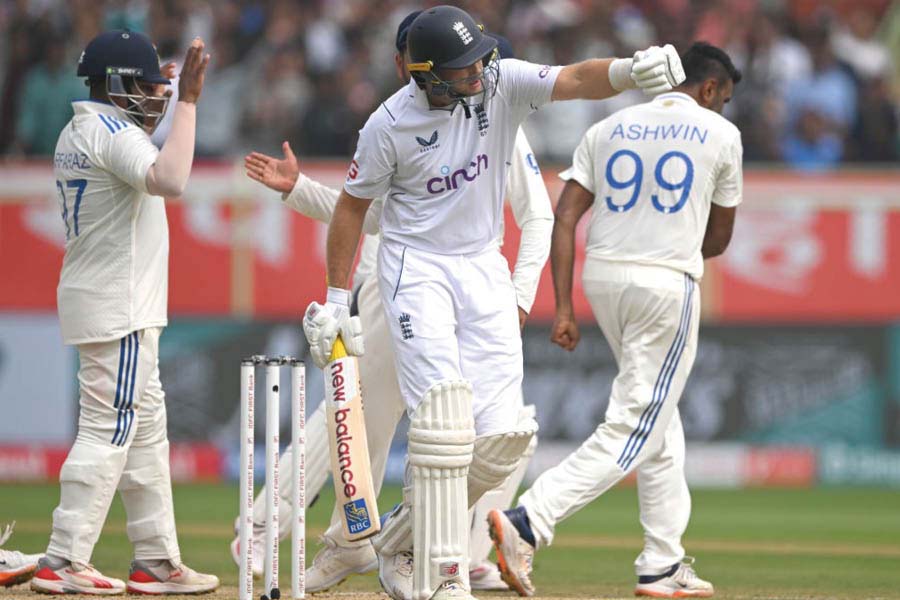In the second Test of the current India vs England series, there were many stories. Joe Root had more runs than the entire Indian team combined. Ravichandran Ashwin continued to spin webs, but his usual partner in ransacking opposition batters, Ravindra Jadeja, was out injured. Jimmy Anderson continued to chase 700 wickets like the silverfox he is. On the other hand, Jasprit Bumrah bowled fire to cement the best-ever strike rate by a Test match bowler in history. The fourth innings arrived in Visakhapatnam as India set England a 399-run target. England claim they will try chasing the runs down in 70 overs.
At this point you are wondering, will they? Can they? The purists may have even asked should they? After all, it’s Day 4 and the match has another day. England have started briskly, and Root is batting. Everyone expects him to settle down and anchor the chase deep on a pitch rather comfortable for batting. But he has started with reverse sweep boundaries and a six — that too against Ashwin of all people. He is eyeing the wide, unguarded, tempting gap on the legside fence. Ashwin also says, “Go on then, try it.” He comes around the wicket, pushing the ball away with the arm, deceiving Root in the flight. The ball is skied, Root has a reflex of horror, he is dismissed for 15 off 9.
Misadventure? Probably. But was the intention clear? Definitely.
I would argue, the man who won over his frustration to channel his aggression won that contest. And that is the nature of everything in Test cricket.

Jasprit Bumrah and (right) Ravichandran Ashwin celebrate the dismissal of Joe Root on day two of the 2nd Test between India and England in Visakhapatnam’s ACA-VDCA Stadium
Getty ImagesFrustration-aggression hypothesis 101
In psychology, the frustration-aggression hypothesis formulates that when humans are frustrated, they have a psychological need to respond. This is especially true in conditions when a goal suffers interference, and the source of the interference or frustration cannot be challenged nor changed easily. Being stuck in traffic when you want to go home and watch Netflix is the obvious example. You cannot ‘dissolve’ traffic (if you can, I can put you in touch with the heads of several major cities of the world!), so you feel frustrated. Your boss refused to approve your 10 per cent hike, and you are stuck with 4 percent. But you cannot leave your job right now, so you end up feeling frustrated.
In the longer format of cricket, this is the pendulum that keeps swinging. In the game of the red ball and whites, every delivery carries the risk of dismissal with only 10 good balls required for the bowling side (or even 10 instances of good luck). Due to this, Test batting is usually founded on the principle of minimising risks. Loss of wickets are the decisive events. This is because in the other formats, the overs are restricted, which makes the per capital return of a wicket a lot more abundant. The other thing is that there is no end in sight. Theoretically, a team could bat the first innings for the entire five days. They wouldn’t win the match, but they could.
On the flip side, where Test batting is geared towards preservation, the bowlers have larger margins to make plans, set catchers, string together sequences of ‘setup’ to get their dismissals. But when the batters get an edge and it slips through or a slog goes for runs, bowlers get frustrated too. This is how in sub-international level cricket, if a ball goes for runs, you can safely bet that the next one will be a bouncer at the batter’s head.

The very best of Test match bowlers — think of Glenn McGrath or Jimmy Anderson or (left) Anil Kumble or (right) Nathan Lyon — are exceptional because they are metronomically consistent
Getty Images, ShutterstockRhythms of a Test match
Frustration, like most emotions, oscillates. It comes, Then increases, then decreases. Very rarely do you have an average 6.5 frustration all day. You will start at 4, then go upto 8.5 and then back to 6. If you don’t cope with it, frustration eventually converts into aggression. Batters are told, “Wait! They will bowl a bad ball, and then you can put it away!” But most don’t. Pressure and frustration build when dot balls become a string. The batter can’t overcome their frustration and lash out in an expansive drive in aggression. Typically, it is a miss, a wicket or a boundary. But time is on the bowler’s side. The very best of Test match bowlers — think of Glenn McGrath or Jimmy Anderson or Anil Kumble or Nathan Lyon — are exceptional because they are metronomically consistent.
But is it only a one-sided contest? Not at all. Think of the third Test of this current series. Day 2, India’s first innings. Bumrah and Siraj come in for the last wicket and frustrate England for half an hour. As a result, bowlers can start bowling poor deliveries and batters can turn the tide.
Test cricket is a lot like a decade compressed into five days. Success in both scenarios comes when we are alert enough to capitalise on opportunities and systematically suppress our frustrations to not make rash decisions. In both scenarios, time creates the ebbs and flows. It often gives the illusion that we are losing when we are winning and therefore makes us frustrated. In both scenarios, it is about accepting imperfect decisions and trying to engage in the best actions to prove the decisions were indeed right.
Dr Sahen Gupta is a Kolkata-born, India- and UK-based psychologist who divides his time between mental health support and high-performance coaching. As the founder of Discovery Sport & Performance Lab, he works not only with Olympians and other top-level sportspersons, but also with CEOs and other professionals striving for excellence. Dr Gupta’s mission is to simplify complexities of the mind into actionable and simple ‘doables’ that allow individuals to be mentally fit.








